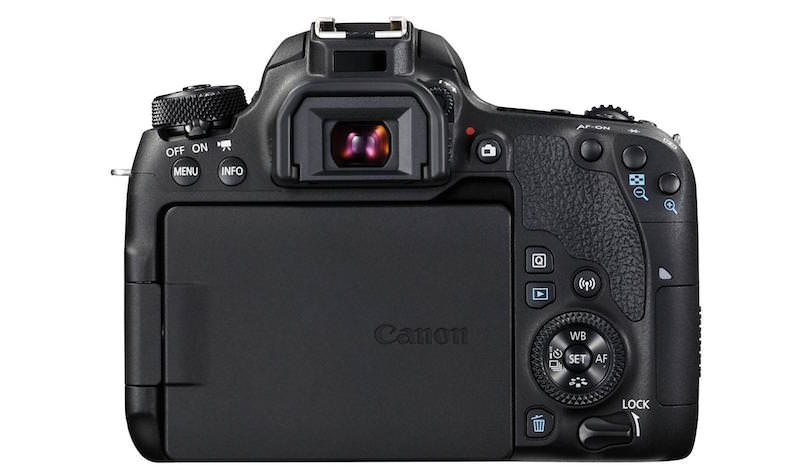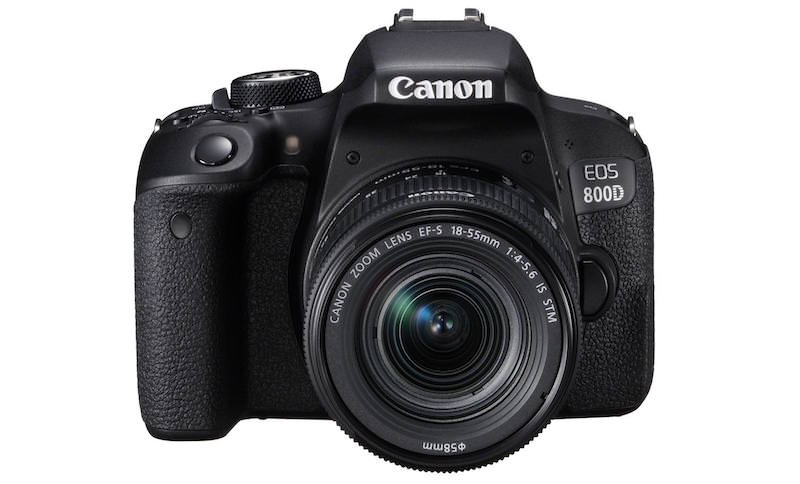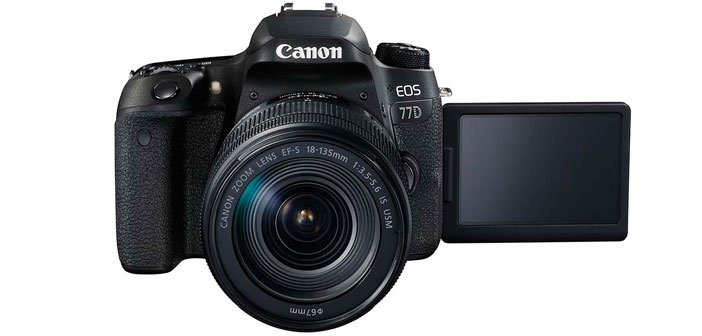Canon EOS 77D and 800D, Canon accepts its dual pixels CMOS sensor 24 Mpixels in two other variants reflex, accompanying this time with the DIGIC 7.
Not only mirrorless, of course. Concurrently with the EOS M6, Canon also introduced two new APS-C entry-level EOS 77D and 800D. The lineup is now as follows: is part of the base consisting of the 1300D, to continue with the 750D and then with the new 800D and 77D; a step higher, the familiar 80D.
The previous 760D will be abandoned – his place is occupied by 77D. Reasonable then assume that even the 750D, while remaining officially available, will soon be overshadowed by the new 800D.
The parallelism between the previous 750D and 760D on the one hand, and the new 800D and 77D on the other hand, it is also evident from the fact that the two new reflex, despite the less affine name, are the same camera.
 Not only Dual Pixel sensor 24Mpixel and DIGIC 7: the two reflex adopt the same viewfinder (unfortunately a pentamirror with 0.82x magnification), the same 45-point AF system borrowed from 80D, the same meter RGB-IR by 7560 pixels, the same rear swiveling touch screen 3″ and 1.04 M of points.
Not only Dual Pixel sensor 24Mpixel and DIGIC 7: the two reflex adopt the same viewfinder (unfortunately a pentamirror with 0.82x magnification), the same 45-point AF system borrowed from 80D, the same meter RGB-IR by 7560 pixels, the same rear swiveling touch screen 3″ and 1.04 M of points.
Obviously Identical ISO range, between 100 and 25,600 (51,200 in ISO extension), the frame rate of 6 fps maintained for 25-27 RAW. Even the size they are identical to the millimeter, a sign that even the chassis is basically the same (131 x 99.9 x 76.2 mm), while the weight is slightly different: the 540g of 77D, 8g in less than the 800D.
 What then is the difference between the two models? As for the couple 750/ 760D, the main difference is the presence, on the 77D of the upper secondary display. In addition, the 800D faithfully reproduces the previous EOS 3 digit footsteps, offering on the back only directional PAD, while the 77D incorporates a sub dial that look like those seen even on high-end compact.
What then is the difference between the two models? As for the couple 750/ 760D, the main difference is the presence, on the 77D of the upper secondary display. In addition, the 800D faithfully reproduces the previous EOS 3 digit footsteps, offering on the back only directional PAD, while the 77D incorporates a sub dial that look like those seen even on high-end compact.
A difference that for some may be important is the time-lapse feature automatic 800D, whereas the 77D offers the classic interval series.
Finally, the Canon EOS 800D has been developed a special graphic guide to the functions in the wake of what also made by Nikon for its 3xxx series.
 Both models, considered individually, are objectively very interesting. Both offer fact-edge technology to the entry segment, high performance, compactness and full Wi-Fi and Bluetooth connectivity. Sure, some may lament the lack of 4K video, but it is in our view a more formal than substantial absence in a product of this range.
Both models, considered individually, are objectively very interesting. Both offer fact-edge technology to the entry segment, high performance, compactness and full Wi-Fi and Bluetooth connectivity. Sure, some may lament the lack of 4K video, but it is in our view a more formal than substantial absence in a product of this range.
 To discriminate between these models is rather difficult even for insiders. To try to make clarity, can be summarized as follows: passing from the mirrorless the reflex entry earns an optical viewfinder (albeit pentamirror), a shutter of 1/8000s rather than 1/4000s, a longer battery life (600 shots against less than 300) and native compatibility with the EF optical park.
To discriminate between these models is rather difficult even for insiders. To try to make clarity, can be summarized as follows: passing from the mirrorless the reflex entry earns an optical viewfinder (albeit pentamirror), a shutter of 1/8000s rather than 1/4000s, a longer battery life (600 shots against less than 300) and native compatibility with the EF optical park.
Passing from the new EOS 77D and 800D to 80D earns further (and substantially) in the viewfinder, which becomes a pentaprism with close to 100% coverage, frame rate, that despite the DIGIC 6 is slightly higher (7 fps against 6, for a similar duration of 25 RAW), and still in the life of the battery (960 shots).
On this occasion, Canon has also introduced a new EF-S 18-55 mm f/4-5.6 IS STM, whose main attraction is its extreme compactness (66.5 x 61.8 mm), and an unpublished Bluetooth remote control (BR-1 FSL).
- The EOS 80D camera’s Intelligent Viewfinder helps bring the thrill of SLR...
- The Intelligent Viewfinder displays AF points and AF mode, has a grid display, a...
- For next level AF operation, the EOS 80D camera has a wide area, 45 point, all cross...
Product prices and availability are subject to change. Any price and availablility information displayed on Amazon at the time of purchase will apply to the purchase of any products.


![Canon Digital SLR Camera Body [EOS 80D] with 24.2 Megapixel (APS-C) CMOS Sensor and Dual Pixel CMOS AF - Black](https://m.media-amazon.com/images/I/415HwjIzaPL._SL160_.jpg)